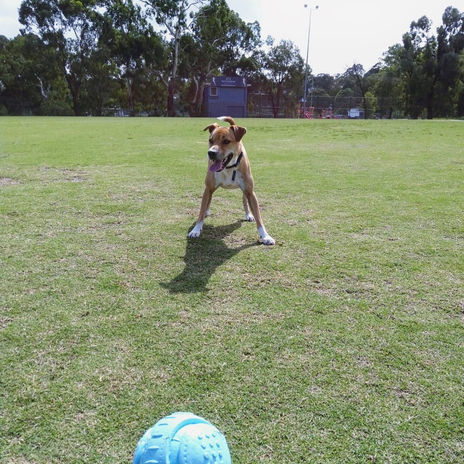DOG ANXIETY
WHAT IS ANXIETY IN DOGS?
Understanding Anxiety in Dogs: Causes, Symptoms, and How Training Can Help
Anxiety in dogs is a common yet often misunderstood behavioral issue that can significantly impact a dog’s quality of life, as well as that of its owner. From separation anxiety to more generalized forms of anxiety, this condition can manifest in a variety of ways and stems from various causes. Understanding anxiety in dogs, its symptoms, and how to address it through behavioral training can make a world of difference in helping your dog lead a more relaxed and fulfilling life.
Just like humans, dogs can experience anxiety, though it is often a result of different triggers. Anxiety in dogs refers to a state of fear, stress, or unease that affects their emotional and mental well-being. This anxiety can manifest in several different forms, ranging from situational fears, such as separation anxiety, to more generalized forms of anxiety where the dog seems anxious in various scenarios without a specific trigger.
WHAT CAUSES OF ANXIETY IN DOGS?
There are several potential causes for anxiety in dogs. These can range from genetic predisposition to environmental factors. Some common causes include:
-
Separation Anxiety: This is one of the most common forms of anxiety in dogs, where they experience heightened distress when separated from their owners or primary caregivers. Dogs with separation anxiety may become destructive, vocalize excessively, or try to escape when left alone.
-
Fear-Based Anxiety: Dogs can develop anxiety in response to loud noises, such as thunderstorms, fireworks, or even the vacuum cleaner. This form of anxiety is based on specific phobias or past traumatic experiences.
-
Lack of Socialization: Dogs that haven’t been properly socialized during their critical developmental stages may develop generalized anxiety. This includes fear of new people, other dogs, or unfamiliar environments.
-
Health Issues: Underlying health problems, such as pain, illness, or aging, can contribute to anxiety. Cognitive dysfunction, similar to dementia in humans, can also cause confusion and anxiety in older dogs.
-
Environmental Stressors: A change in routine, a move to a new home, or the addition of new people or animals can create a stressful environment, leading to anxiety.
SYMPTOMS OF ANXIETY IN DOGS:
Anxiety manifests differently depending on the severity and type of anxiety your dog is experiencing. Some common symptoms include:
-
Destructive behaviour such as chewing, digging, or scratching furniture
-
Excessive barking, whining, or howling, especially when left alone
-
Pacing, restlessness, or a lack of relaxation
-
Hiding, drooling, panting, or excessive licking
-
Loss of appetite or gastrointestinal issues
-
House soiling, even if house-trained
-
Trembling or shaking
ANXIETY IS NOT OBSERVED IN WILD POPULATIONS:
An interesting fact about anxiety in dogs is that it is not observed in wild populations of canines, such as wolves. In the wild, dogs and their relatives are typically part of a pack, and their lives are structured around survival and routine. They are not left alone for extended periods, and their environment is more predictable. In contrast, domestic dogs often experience a very different reality. They are left alone during the workday, may not have sufficient stimulation, or live in a world filled with unfamiliar noises and situations. These conditions can contribute to the development of anxiety, a state that is not typically seen in wild dogs.
HOW CAN BEHAVIOURAL DOG TRAINING HELP?
While anxiety in dogs can be distressing, the good news is that it is treatable with proper behavioural training. The key to helping an anxious dog is providing them with a structured, predictable environment, reducing their stressors, and teaching them how to respond calmly to triggers.
Behavioral training focuses on addressing the root causes of anxiety and reinforcing a calm, confident state of mind in your dog. One of the most effective approaches is for the owner to take the lead and become the calm, stable presence in the dog’s life. Dogs look to their human companions for guidance, and when they sense that their owners are calm and in control, they feel less responsible for managing the situation themselves.
Here are some ways behavioral training can help:
-
Desensitization and Counter-Conditioning: Gradually exposing the dog to anxiety-inducing situations in a controlled manner can help them learn to cope without overreacting. For example, if a dog has separation anxiety, you can begin with short periods of absence and slowly increase the time, rewarding calm behavior.
-
Leadership:
-
Positive Reinforcement: Reinforcing calm and relaxed behavior with treats, praise, and attention helps dogs understand that being calm is desirable. This helps shift their focus from anxiety-driven behaviors to more appropriate responses.
-
Establishing Routines: Dogs thrive on routine. Providing a consistent schedule for feeding, walks, playtime, and rest can give your dog a sense of security and reduce anxiety caused by uncertainty.
-
Creating a Safe Space: A designated “safe” area in the home can provide your dog with a retreat where they can relax and feel secure, away from stressors like loud noises or unfamiliar visitors.
-
Redirecting Focus: Training exercises that focus on mental stimulation, such as puzzle toys or obedience training, help redirect your dog’s energy from anxiety to positive behaviors.
CONCLUSION
Anxiety in dogs is a complex issue that can deeply affect your pet’s well-being, but with the right approach, it can be managed and alleviated. By understanding the causes and symptoms of anxiety, and with the help of behavioral training, you can give your dog the guidance they need to overcome their fears. Anxiety is not an inevitable part of a dog’s life, and through patience, consistency, and compassionate training, you can help your dog develop the calm, confident mindset they deserve.












